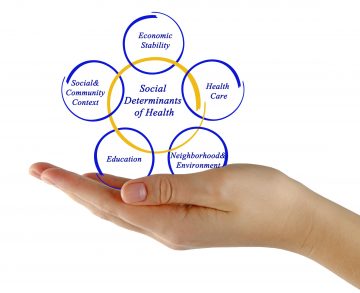
Who am I? Let’s assume that we’ve solved the positive person identification problem and we know with 100% certainty the identity of the person who’s come for a health or care interaction. Do we really “know” them? I think not. Even today with the proliferation of electronic records and the availability of so much data, we can only record a weak approximation of all that person is in a computer system.
As a CIO, it was common for a Board member at my organization to ask me, “Why can’t you do what my bank does?” Flustered for many years, I finally got the answer one evening when I was taking coins out of my pocket getting ready for sleep. It was the penny that inspired my “aha” moment. I woke early the next morning and prepared a slide for a Board presentation that very week. My slide was simple. The title was the question above. Before answering the question, I asked anyone in the audience to produce a penny. I had one in my pocket just in case the Board didn’t carry change. I asked that Board member to hold it up as I pressed the forward key on my computer to reveal the answer – a picture of the obverse (heads) and reverse (tails) sides of a penny.
Financial institutions of all types, including banks, have something that healthcare does not – a common unit of measure – the penny. All reports in a bank, all transactions in a bank, are impacted by or have an impact on that penny or a collection of them. It’s relatively easy for the bank to describe that impact in unambiguous terms.
Why can’t we do what the bank does? Because health and care do not have a common unit of measure to describe a human being. We are an incredible collection of elements. We are not just our lab results, we are not just our medications, we are not just our demographics, we are not just our diseases…you know I could go on. In very broad categories, we are our parents’ child (genetics), our environment, our belief systems, our actions, our experiences. The focus on SDOH is not new. The earliest reference to the term SDOH that I found was from 1991, but I’d guess the discussion of such began before the term SDOH was coined. In fact, attention to elements that constitute SDOH and actions to protect and care for people goes back to ancient times. We just didn’t have a term for it.
Now is the time to start working in earnest to make sure that our data capture systems can absorb the elements of SDOH however you may define it. To use those elements effectively, however, we must make sure that we have vocabularies, constructs, and context that allow us to use these data to learn and then educate. We must make sure that we’re gathering them on a timely basis, sharing them freely, and using them when it’s appropriate to do so. We must educate and share our knowledge about the impacts of SDOH on the people at the center of our efforts – patients, families, providers, payers, and communities.
SDOH alone even with context is not a whole solution, but it helps create a more complete picture of a person. Right now, the picture we have of a person is constructed from only a small number of pixels. The picture is rough and poorly defined. The more data we collect by including the SDOH, the more pixels we can add to the picture. The more defined the picture of that person becomes, the better we can respond to their needs. Let’s do what we can to gather the SDOH data, refine it, share it, study it, and apply it. Let’s improve the answer to “Who am I?”
